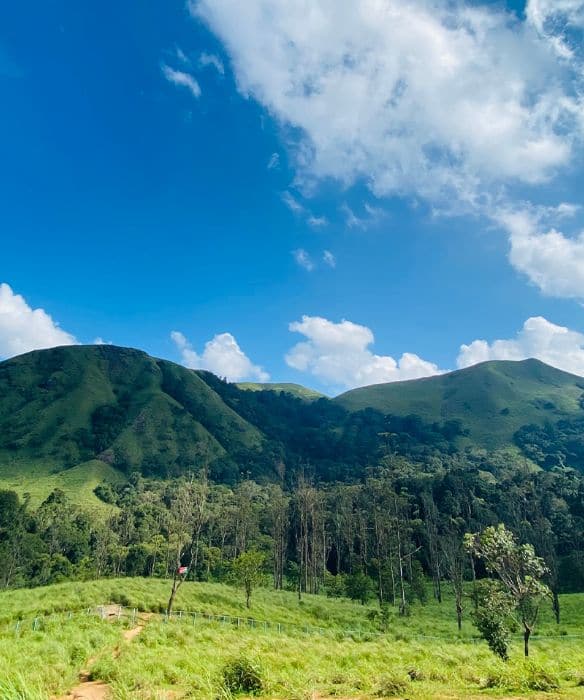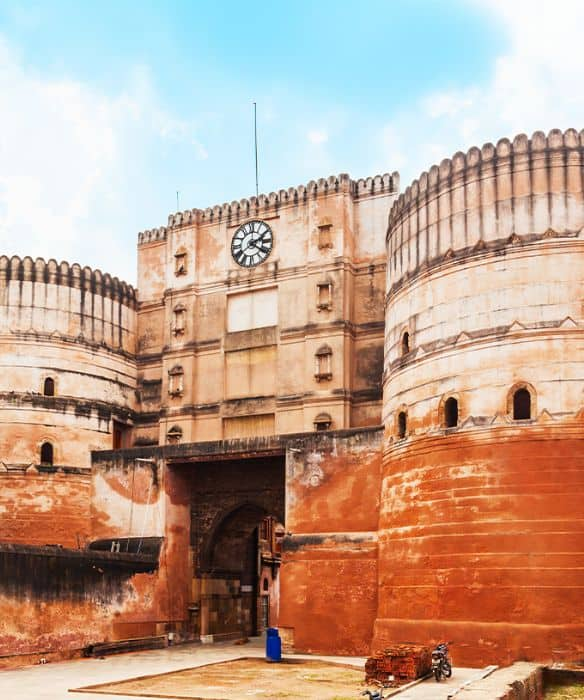Stay logged in to proceed with bookings, orders and offers.
On changing the terminal, you will loose items in your cart. Are you sure you want to change your terminal?
An eyewitness guide to wildlife spotting in Kaziranga National Park, which is home to more than 2,000 one-horned rhinoceros.
The UNESCO World Heritage Site of Kaziranga National Park is situated in the state of Assam, in the northeastern part of India. It is the natural habitat of the famous Indian one-horned rhinoceros and is also home to a sizeable population of tigers and elephants, among others. I had the privilege to visit this wildlife haven when I attended a friend’s wedding in Jorhat, in December 2022.
We landed in Guwahati around 3:00 pm and decided to rent a Zoom car for the entire trip. It is advisable to rent a self-drive car as it offers convenient airport-to-airport transfers. Additionally, it allows you to navigate your itinerary with ease by making it possible to take as many breaks and detours as you need. It is also a more cost-effective option around these parts.
After attending the wedding rituals in Jorhat, we started for Kaziranga at noon. The 120-km drive took us around 3 hours to cover. We had to cross the Kaziranga National Park, which is an approximately 50-km-long animal corridor, to reach Jorhat from Guwahati. All along NH 37, there are plenty of warnings to drive slowly. You'll see digital speedometers on the wayside and rumble strips to keep your speed in check. If you drive above 40 km/hr, you may end up paying a hefty fine of ₹5000.
Since the area is an animal corridor, we had mixed feelings of fear and excitement when we entered the jungle. However, the calm of the wilderness was a treat to our city-weary nerves as we slowly cruised across the national park. However, we could not see much of the scenery as it was pitch dark by 5:30 pm when we were driving through the jungle. Remember that the sun sets by 4.00 pm in the Northeast; so, plan your travel accordingly.
There were hardly any streetlights once we crossed Guwahati. However, the speed limit ensured that we had a smooth driving experience, despite numerous trucks and local jeeps trying to overtake us. Most of the local drivers are usually aware of the exact locations of the digital speedometer sensors along the way. We ensured that we carried enough water and snacks and took sufficient restroom breaks before entering the jungle. Note that you cannot make stopovers along the 50-km stretch and there are no shops either. There are numerous jungle resorts on either side of the road. So, you can consider checking out one of these for your stay in Kaziranga.
At Kaziranga, we stayed in a small resort called Camp Rhino. Since we were a group of 7 people and the bookings were made at the nth minute, we didn't have much of a choice. We were lucky to find this small yet decent place which has 5 double bed cottages, with ensuite bathrooms and balcony areas to lounge about. The tariff for our stay rounded off to ₹2k for a cottage with double occupancy and complimentary breakfast.
We rented 4 out of the 5 cottages on the property, so we were assured of complete privacy. The owner of the property helped us arrange passes for the elephant safari. It was scheduled for the next day at 5:00 am, followed by an open jeep safari at 6:30 am. It is necessary to get the tickets in advance, owing to the limited availability of elephants. There are also only two slots available: one at 5:00 am and the other at 6:00 am. The jeep safari is available till 2:30 pm every day. During our drive to the resort, we spotted some elephants being trained to carry logs of wood and were mesmerised at the sight of the mighty army. The trainers were very playful with the elephants.
We enjoyed the rest of the day playing cards, listening to music, and eating dinner at the resort. The staff cooked piping hot food which was rather welcome in the chilly weather. We hit the bed around 10:00 pm as we had an early morning alarm of 3:30 am. We were asked to reach the Western Range of the national park where the elephant safari begins. Early morning is the perfect time for wildlife watching for it is when animals wander around for food and water. When we got there, we were giddy with excitement to explore the jungle and spot other animals.
Since we had to cover a distance of 25 km, we set off from the resort at 4:15 am and reached the Western Range at 4:45 am when it was still dark. Many tourists were milling about the place, waiting to embark on this adventurous journey. As we waited to hop aboard the ride, the elephants were fed bananas before being taken to the starting point. Note that the cost of the elephant safari is ₹4000 for a group of 4.
The gates finally opened at 5:00 am and we stood at the embarking point waiting for our turn. The mist was clearing up and the sun was peeking out, revealing picturesque vistas of this wonderland. As we mounted the elephants, we noticed that the seats were cushioned to ensure a comfortable experience. The park officials also made sure that the weight on either side of the elephant was balanced so that it isn't too uncomfortable for the elephant or us.
It was such a pretty view with an army of elephants, both young and old, ready to storm the front and take us through the wild. When we climbed aboard the elephant, we received clear instructions from the mahout – the elephant rider – to hold on to the rails for safety and not feel scared. We were told that the majestic gentle giant we were riding was 20-year-old Otto.
When the safari started, we felt as though we had been transported to another world, with beautiful views of placid lakes framed against mist-shrouded mountains. As the mist started to clear up, the jungle looked straight out of a National Geographic wildlife documentary! With 40 to 50 elephants striding gently across the turf, it made us feel we were part of a royal court or a scene from a medieval battle. It was a surreal experience!
As we trudged along the trail, we heard a variety of bird calls. We were told that Kaziranga serves as a stopover for several rare species of migratory birds. We were awestruck at the park's rich flora and fauna! Right off the bat, we spotted the Barasingha deer darting away into the jungle.
Another 10 minutes into the ride, we caught sight of the rare, exotic one-horned rhino! It was around 40 meters away from us walking around a pond with a bird on top of its head. We were told not to fall for their innocent looks as they can be aggressive at times. The national park is home to hundreds of rhinos, so spotting one here is fairly easy.
We also chanced upon monkeys, various species of deer, and wild buffaloes. But the most beautiful of all was a scene I will never forget: a mother rhino guarding her baby rhino. The mahouts were very enthusiastic to show us the fauna around and were cooperative enough to allow us to take lots of pictures and film videos. Our mahout even requested a fellow mahout to take our pictures while our elephant struck some gorgeous poses, curling up its trunk.
We headed back to the starting point after a thrilling 45-minute ride and were still in awe of the place. After we de-boarded, we tipped our mahout for his incredible service. On our way back, we were lucky to catch spectacular sunrise views. Before exiting the park, we clicked a frame-worthy group picture, under the board marking the place as a UNESCO World Heritage Site, for keeps.
We then moved on to the Central Range where we started our jeep safari, which was an exhausting two-hour ride. We spotted deer, elephants, rhinos, and an injured python right next to our vehicle on our drive through the park. Outside the park, we found several small stalls selling souvenirs as well as hot Maggi and tea.
We picked up wooden miniatures of a mother rhino and a baby rhino as a keepsake to take back home. We also picked up several miniatures and caps as souvenirs for our friends and colleagues. Each of these was priced between ₹150 to 200.
If you are a nature and wildlife lover, Kaziranga National Park is a must-visit. It is indeed a moment of great pride to visit a place that is home to the largest group of the great Indian one-horned rhinoceros and I appreciate the work of all park officials for maintaining and conserving our wildlife, eliminating poaching, and saving this rare species from extinction. Kaziranga was truly an experience to cherish for life and will always have my heart!





The Adani One expressly disclaims all liability, direct and indirect, in respect to actions taken or not taken based on any or all the contents of this Blog. The Blog is an opinion of the contributor based on the collation of data from various sources and is provided only for information purpose. Adani One does not canvass, advertise, solicit, invite or induct for any product, merchandise, information, brand or any other materials mentioned in the Blog, nor does it obtain any monetary benefit from the same. Reader is advised to read and apply his/her intellect and discretion in this regard. Any Intellectual Property mentioned in this blog belongs to the rightful owner. We do not intent to claim any interest over the same.